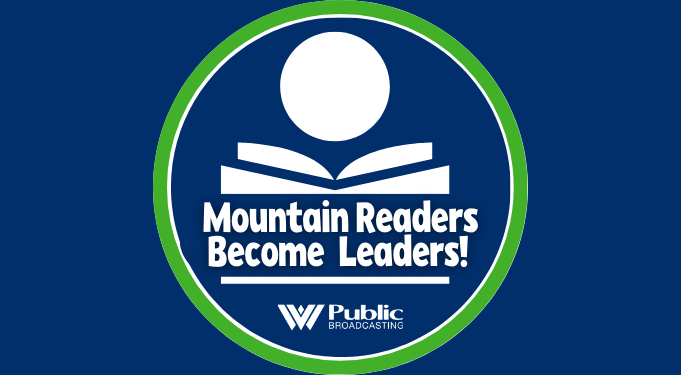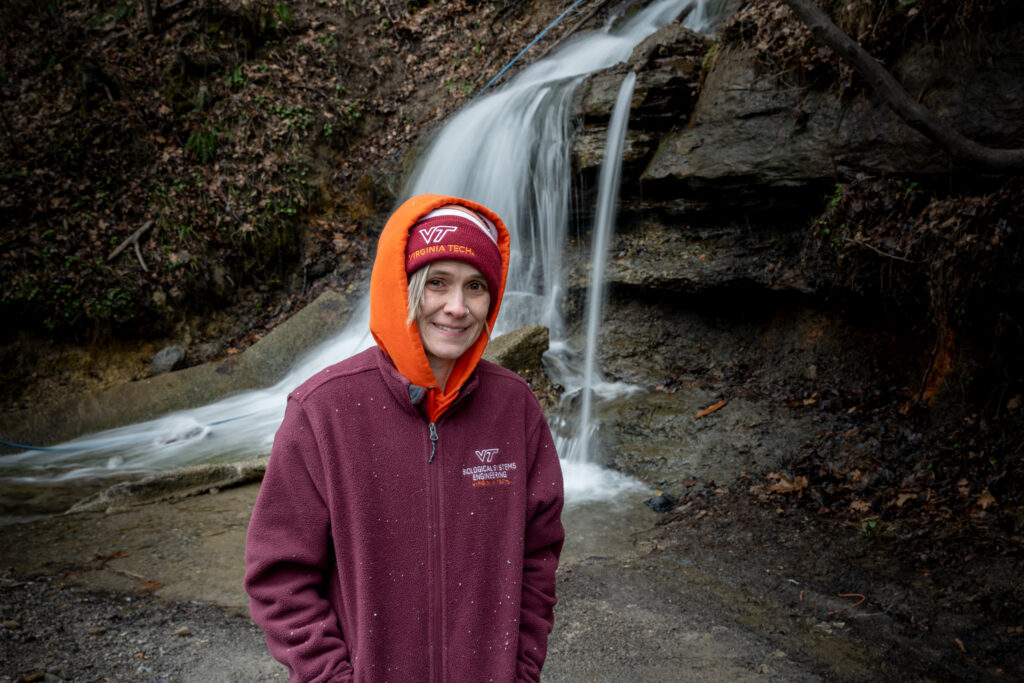This conversation originally aired in the Sept. 3, 2023 episode of Inside Appalachia.
It’s an old story in Appalachia: failing water systems leaving people afraid to drink from their taps.
Now, Virginia Tech researchers are putting numbers behind the stories with a study of water inequality in McDowell County, West Virginia. Leigh-Anne Krometis is a professor of biological systems engineering at Virginia Tech, and she was part of the team that conducted the study.
Inside Appalachia Host Mason Adams reached out to learn more.
This interview has been edited for length and clarity.
Adams: We’re talking because of a study that you and your team did in McDowell County, West Virginia. Tell us about what the study was and what y’all were looking for.
Krometis: I have been studying roadside springs for a long time. If you drive around Appalachia, I’m sure you’ve noticed people with their jugs collecting water at roadside springs. Several years ago, I started researching the water quality of those springs and why people value them, and then that led me really to look at people’s home water quality. Because when you see people collecting water, you wonder, “Well, do they have water in their homes?” My original hypothesis was, “Oh, well, these people don’t have water in their homes. And that’s why they’re choosing to go to the springs.”
In reality, the majority of the people that we have gone to their homes and interviewed and taken home water samples, they have water in their homes, they can turn on the tap and water comes out. But it’s not water they trust, or it’s not water that meets federal guidelines.
Adams: I can’t think of the number of times I’ve been at someone’s house and asked for a cup of water, and they’d tell me to drink bottled water instead.
Krometis: A colleague of mine said, “You’re gonna find out that everyone’s using bottled water anyway.” And that is really the second phase of this study, is we’re looking at the health and economic implications of having to rely on bottled water, because you have water in your home, but you can’t use it. We all know that there are food deserts. McDowell County is the only place I think in America where a Walmart failed. You have to drive 30-45 minutes just to go somewhere to buy your bottled water. It’s an added cost. Bottled water is 2,000 times the cost of what you get out of the tap. And so what does all that mean, to us, especially for people who don’t have huge household incomes?
Adams: How did you all research this question in McDowell County?
Krometis: We worked with some community groups and community contacts. We’d go to someone’s home and say, “Would you like free water quality testing?” One of the things that’s really important to me is the democratization of water science. If I collect a water sample from your home and analyze it, I give the data back to you first. That data isn’t mine, it’s yours. It’s your exposure in your home. We collect water samples, and then do a short interview about typical water-use reliance on bottled water.
Adams: What did you find in this initial round of results?
Krometis: The most obvious thing is that, especially for homes that are reliant on private water systems, people in Appalachia get pretty creative. I mean, all over the country, we see private wells and private springs, but folks here also have cisterns. They have other ways of running water into their homes. The most common contaminant we see is coliform [bacteria] and E. coli, which are bacteria that if you had them in a centralized system, it will cause a boil order, because it means that there’s actually fecal contamination. There’s a health risk. In homes that are reliant on public water, we didn’t see that because chlorine is kind of a miracle worker. We did see high levels of salt and some things that can make water taste funny in some homes.
But the more interesting thing that I found … as a water scientist, is there’s this kind of new idea called multiple water use, which is that we imagine that people in their home you turn on a tap, and that’s the water use for everything. But actually, people are making a lot more subtle choices. You might use bottled water to drink, or to use for cooking, you might go collect spring water for coffee, or for making tea. And then you use the tap water for cleaning. Or maybe you have two different wells or a rainwater cistern on your home. But this is a lot of mental work. That’s a lot. It’s not just turning on your tap for everything. You have to think about which water you’re using for what purpose. And that’s an idea that science is only just now realizing. I mean, it’s a reality people in Appalachia have known for hundreds of years. But it’s something we’re just realizing makes exposure really difficult to measure.
Adams: I’d like to go back to this question of spring water, because I know for myself, and a lot of people, they just think that water from natural springs tastes better. You’ve actually done some research. Is spring water better to drink than bottled water or tap water?
Krometis: No. The problem with “spring water” is that it’s generally not truly spring water. We have this idea that it’s groundwater, and so it’s protected from all the gross things humans are doing on the surface. But because of the underlying rocks and geology of Appalachia, it’s often not even truly groundwater. It’s surface water that has sunk under the ground and reemerged. There are lots of places where we sample that people think are springs, [but] they’re actually outfalls from historic mine sites.
Now, ironically, some of those flooded mines have pretty decent water quality, because they’re so deep, but 80 percent of the springs that I’ve sampled have E. coli in them. If you were out hiking on the Appalachian Trail or going camping, you would want to boil that water before you used it. But it looks great, right? It’s in a beautiful setting and it doesn’t taste like chlorine, but it really does not meet health guidelines.
Adams: What are some of the implications for this study and what you found?
Krometis: We’ve had some national level analyses talking about the “plumbing poverty” or water inequity, and Appalachia frequently comes up bright red, as somewhere that is challenged by this. We don’t really talk about what that means in terms of the human impacts. What is the lived experience of being in a place with plumbing poverty? That means extra time waiting at a spring, it means extra health impacts, because you’re exposed to water that doesn’t meet guidelines.
It’s just the indignity of having to spend your time juggling different ideas of what water you can serve to company versus yourself for using it to make baby formula. What I hope is that this motivates long-term investment, and also creative investment. The way that we typically create water infrastructure in America with these long water lines; it might not work for Appalachia. And people here are creative: How do we take that creativity and make sustainable healthy water systems that meet needs?




















